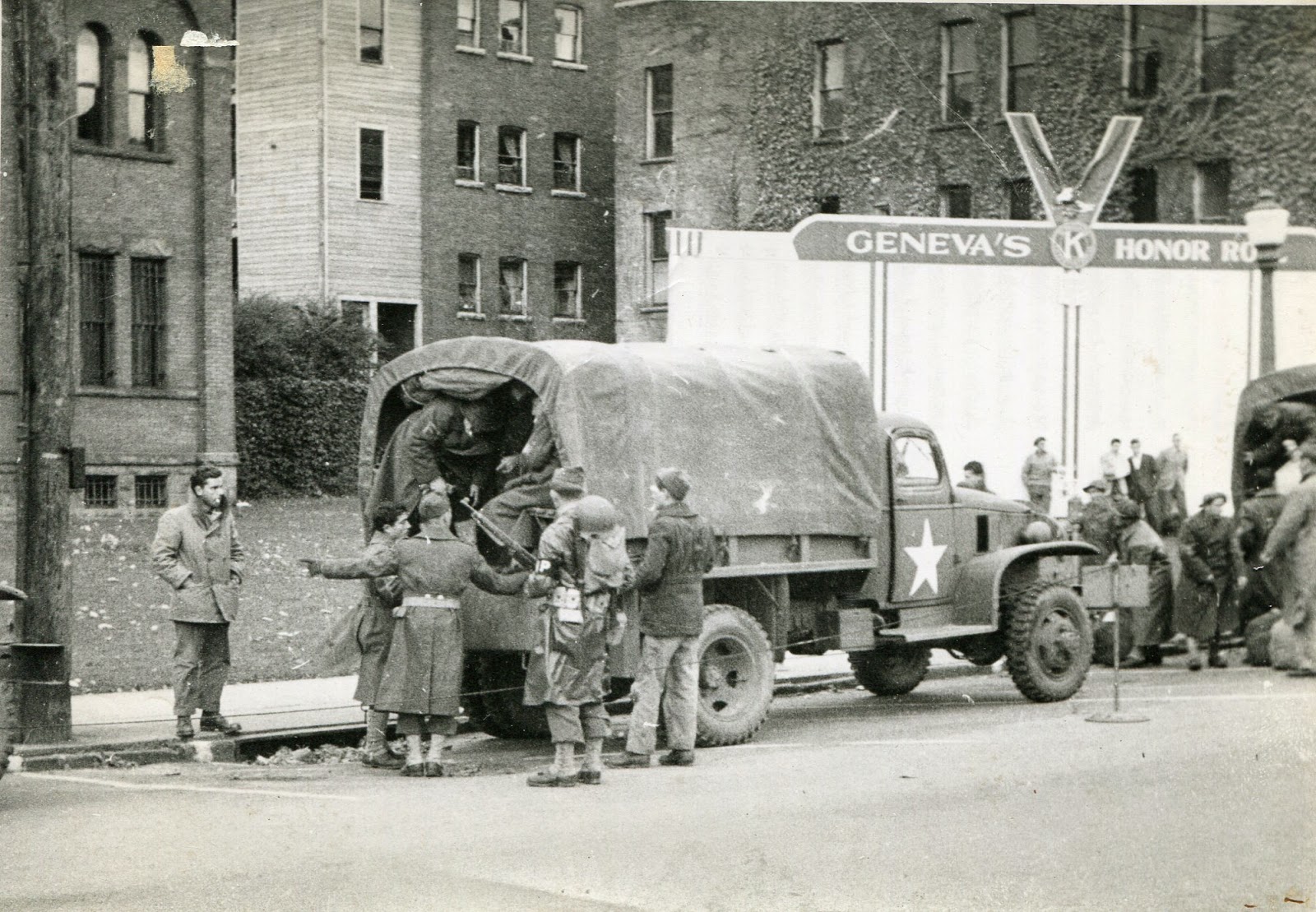The following material was part of display
last fall by John Marks’ Public History class at Hobart and William Smith.
By
Cormac McKenna
During
World War II, there were many jobs that were being used to aid the war effort.
Some of these include railroad workers, foundry workers, fisheries, and
farmers. Under the Selective Service and Training Act, farmers (along with the
other industries) were not drafted if their trade was necessary to aid the war
effort. Many times this was ignored and men in these fields were drafted
anyways. Ignoring the Selective Service Act caused labor shortages starting
with dairy farms. Local SSA boards had to make decisions on who was necessary
to stay, and many times the migrant workers were the ones being drafted into
the service. The guide the SSA used showed what foods were necessary to keep
growing, and how many acres or heads of animals were necessary to keep that
farmer from the war.
By the
end of the war, there were almost 1,000 men who were enlisted in the army from
Geneva. The loss of these men caused a drop in people who were able to work.
While the men from Geneva were being drafted for the war, over one hundred of military officers from the nearby
Sampson military base started moving in. They took up housing in apartment
buildings in Geneva. The addition of these military officers led to a
misleading boom in population. In reality, the loss of the men from Geneva to
the war was very problematic for the farming in the area.
 |
| Italian Prisoners of war being shown to their quarters at the State Armory in Geneva to work on farms. |
Prisoners
of war were used by the masses in New York State during World War II. During
the war from about 1944 to 1946, 4,500 POW’s were put to work in labor camps to
farm crops that would later help aid American servicemen fighting in the war.
Out of those, Geneva hosted 129 Italian POW’s and 279 German POW’s to help
harvest carrots, beans, beets, and cabbages. The help from these men was very
important to the war effort because about 600 Genevans were volunteering in the
war effort, including male farmers.
Many
students in Geneva were used as laborers during the war. At first it was only
college students and their teachers being recruited to help out on the farms.
Before 1942, Geneva school students were also being asked to work in the fields
until later legislature disallowed it. These students helped harvesting
tomatoes, beets, corn, cucumbers, potatoes, and apples. Students of either
gender were selected to work in the fields as they were all seen as capable of
doing the same amount of work. The students played a key role in helping with
the labor shortages.
With
men being drafted to go off to war, women played a crucial part in the U.S.
They took on many of the roles in the workforce that were left vacant from men
joining in the services. Farms were very important food sources for the men
serving in the war. The draft started to take too many men off the farms so in
their absence, many women were used to work on the farms. They helped keep the
economy stable with their labor in the fields, harvesting thousands of pounds
of crops to be sent to the front lines. In Geneva, many women picked up the
slack of labor shortages by working in the fields and also working in
canneries, canning certain foods needed for the war including tomatoes and
cherries.








.jpg)


























